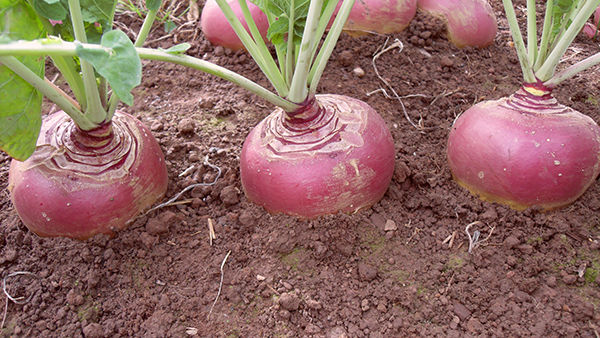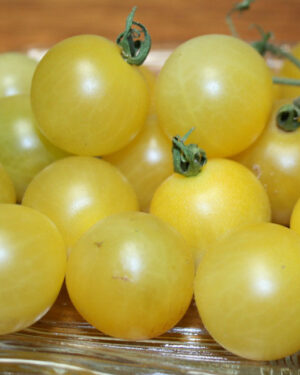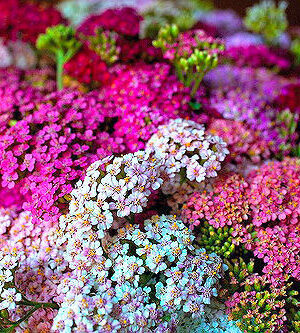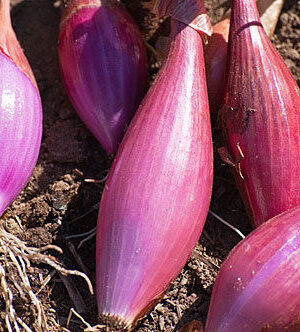Description
SWEDE – TWEED F1
SWEDE – TWEED F1 . A British-bred F1 hybrid swede, early maturing and vigorous variety, growing particularly well in less fertile soils.
Cultivation Advice
- Swedes prefer well-draining, fertile soil with a slightly acidic to neutral pH (around 6.0-7.5).
- Add organic matter, such as compost or well-rotted manure, to improve soil structure and nutrient content.
- Start sowing seeds indoors in early spring or directly sow them outdoors in late spring to early summer.
- Plant seeds about half an inch deep in rows, spacing them according to the instructions on the seed packet.
- Swedes thrive in cool temperatures. Ensure they receive full sunlight for at least 6 hours a day.
- In warmer climates, provide some shade during the hottest part of the day.
- Keep the soil consistently moist, especially during dry periods. However, avoid waterlogging, as Swedes do not tolerate overly wet conditions.
- Water deeply and regularly to encourage proper root development.
- Once the seedlings have developed a couple of true leaves, thin them to provide adequate space (usually around 6-12 inches apart, depending on the variety).
- Proper spacing ensures good air circulation and allows each plant to develop a healthy root system.
- Swedes benefit from a balanced fertilizer application. Side-dress with a nitrogen-rich fertilizer about four weeks after planting.
- Avoid excessive nitrogen during the later stages of growth, as it can lead to lush foliage at the expense of root development.
- Keep an eye out for common pests like aphids, flea beetles, and cabbage worms. Use organic or chemical controls as needed.
- Rotate crops yearly to minimize the risk of soil-borne diseases.
- Swedes are typically ready for harvest 90-120 days after sowing. Harvest when the roots are firm, smooth, and have reached a good size (usually 4-6 inches in diameter).
- Use a garden fork to carefully lift the roots from the soil.
- Store harvested Swedes in a cool, humid environment. A root cellar or a refrigerator works well for short-term storage.
- Swedes can be stored for several months if kept in optimal conditions.
- Apply a layer of organic mulch around the base of the plants to help retain soil moisture, suppress weeds, and maintain a more consistent soil temperature.
- Avoid planting Swedes in the same location where other Brassica crops (cabbage, broccoli, etc.) were grown in the previous year. Crop rotation helps reduce the risk of soil-borne diseases.
- Consider companion planting with crops that help deter pests. For example, planting aromatic herbs like rosemary or thyme nearby can repel certain insects.
- Monitor the plants regularly for signs of pests, diseases, or nutrient deficiencies. Early detection allows for prompt intervention and better crop health.
- Swede plants may benefit from support during their growth to prevent them from toppling over in windy conditions. Staking or providing other forms of support can help.
- To extend the harvest period, consider successive plantings with staggered sowing dates. This can provide a more continuous supply of fresh Swedes rather than a single large harvest.
- Aim to harvest Swedes before they become overly mature, as older roots may become tough and woody. Harvesting at the right time ensures better flavor and texture.
- After harvesting, trim off the tops of the Swedes, leaving about an inch of stem. This helps reduce moisture loss and extends the storage life of the harvested roots.
- Practice good garden hygiene to prevent the spread of diseases. Remove and dispose of any infected plant material, and avoid working in the garden when the plants are wet.
- In regions with mild winters, Swedes can be left in the ground and harvested as needed during the winter months. Mulch around the plants to protect them from freezing temperatures.
- Keep a gardening journal to record planting dates, weather conditions, and any issues encountered. This information can be valuable for planning future crops and improving cultivation practices.









Reviews
There are no reviews yet.